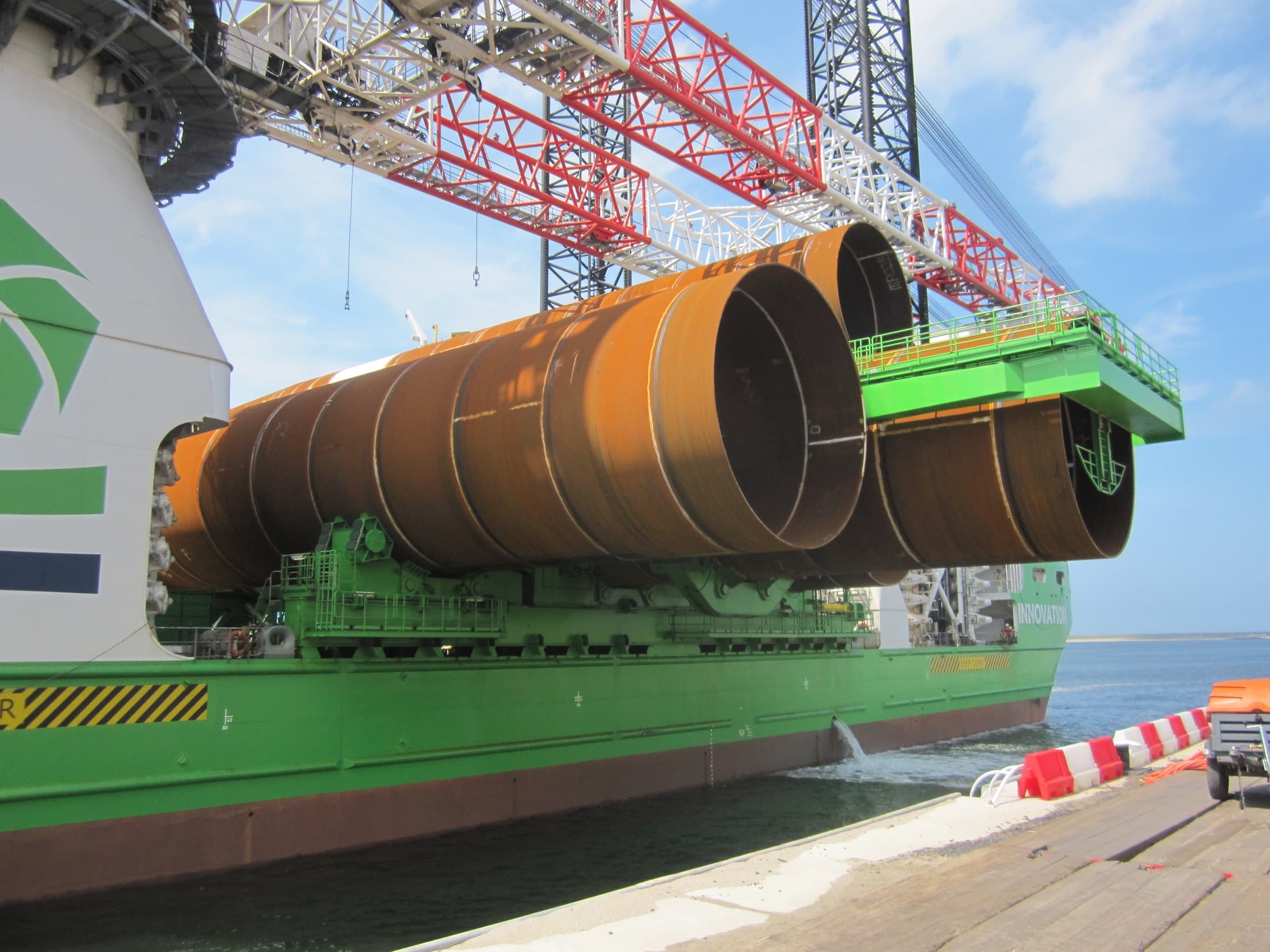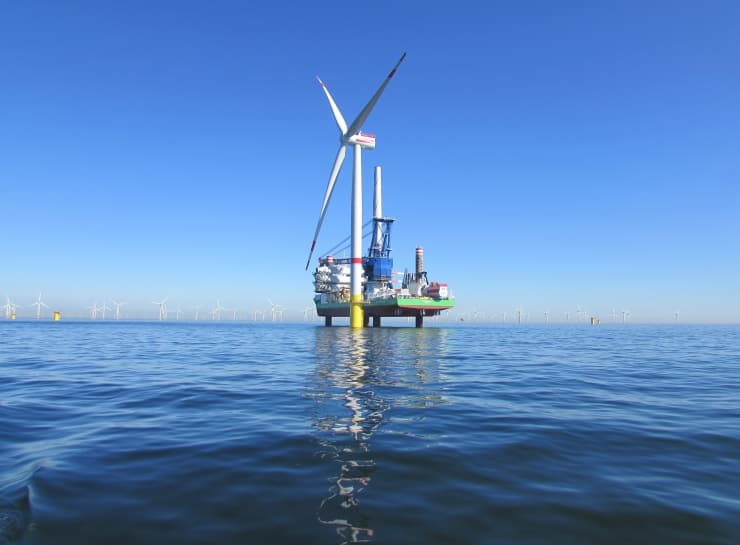
Heavy plate from Dillinger for the
Belgian offshore wind farm Rentel
State-of-the-art wind turbines and real jumbos
Located in the Belgian North Sea 40 km north of Ostend and covering an area of 22.72 km², the Rentel offshore wind farm includes 42 awe-inspiring 7.35 MW wind turbines. They are not only ultra-modern because they operate in a “direct drive” mode, without a gear box, i.e. the rotor is directly connected to the generator. They are also the largest turbines installed so far in the Belgian North Sea. The following comparisons illustrate their impressive size: the towers, each 470 t, rise 106 m above the water surface. The nacelles, 20 m long and 6 m wide, have the size of two standard houses. Each blade weighs nearly 30 t and is no less than 75 m long and up to 5 m wide, which is one and a half times the length of an Olympic pool. With a diameter of 154 m, the rotor covers a swept area of 18,600 m², which is equivalent to the wing span of two Airbus A380. In summary, the total weight of a single wind turbine (tower + nacelle + rotor) comes in at approximately 950 t. The foundation included, the height reaches nearly 200 m, which is twice the one of the Atomium and more than one and a half times the cathedral of Antwerp.
At water depths ranging between 22 and 36 m, the turbines are based on monopiles foundations (weighing up to 1,250 t and having an 8 m diameter), for which Dillinger supplied 55,000 t of thermomechanically rolled heavy plates in thicknesses of 63 to 100 mm.
With a total installed capacity of 309 MW, Rentel is able to supply green electricity to around 285,000 Belgian households, thus making a significant contribution to achieving the Belgian and European climate objectives.
ubstation: Dillinger steel is used for the transformation
Dillinger heavy plates (1,150 t of thermomechanically rolled plates in thicknesses of 30 to 100 mm) were also used for the construction of the monopile foundation (80 m long and 7 to 8 m in diameter) of the farm’s substation which raises the voltage from 33 to 225 KV before forwarding the current obtained, via a submarine cable, to the shore power grid.


